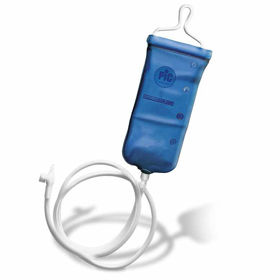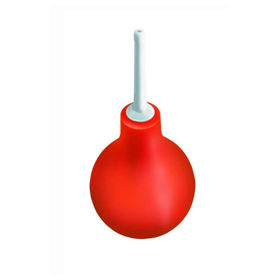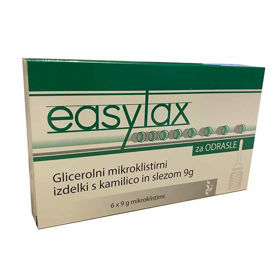Ileus (paralytic Ileus, adynamic Ileus) is a condition where the normal contraction of the intestinal wall temporarily stops. Like a mechanical obstruction, an ileus prevents intestinal contents from moving. In contrast to mechanical obsObstructionleus rarely causes perforation.
ILEUS and MECHANICAL BOWEL OBSTRUCTION: General | Symptoms and Diagnosis | Treatment | Appendicitis | Mechanical bowel obstruction | Questions and Answers | Sources/references
Ileus can result from an infection or blood clot in the abdominal cavity, atherosclerosis, which reduces the blood supply to the intestine, or damage to the intestinal artery or withers.
It can also result from a disease outside the intestine, such as kidney failure, or abnormal levels of blood electrolytes, such as low potassium or high calcium values.
Image: Ileus can result from an infection or a blood clot in the abdominal cavity.

Certain medications and reduced thyroid activity are other causes of Ileuseus. It often occurs 24 to 72 hours after abdominal surgery.
Symptoms and diagnosis
Symptoms of Ileus are abdominal bloating, vomiting, severe heartburn, and cramps. The doctor hears little or no bowel sounds through the stethoscope. Abdominal x-ray shows swollen intestinal loops. A colonoscopy is sometimes performed to assess the condition.
Treatment
Gas and fluid that have accumulated due to Ileuseus must be removed. Sometimes, a tube is inserted into the colon through the buttock to relieve the pressure. Then a tube is introduced through the nose into the stomach or small intestine, and the contents are sucked through to relieve pressure and distension. The patient should not eat or drink anything until the condition improves. He is being replaced with fluids and electrolytes intravenously.
Appendicitis
Appendicitis is inflammation of the appendix, a small, finger-like tube that protrudes from the large intestine near where it joins the small intestine. The appendix may have an immune function but is not necessarily an organ.
Video content: Understanding ileus (paralytic ileus).

Except for strangulated hernias, appendicitis is the most common cause of sudden, severe abdominal pain and abdominal surgery. Appendicitis is most common between the ages of 10 and 30. The exact cause is not known.
Mechanical bowel obstruction
Mechanical intestinal obstruction is a barrier that completely prevents or dramatically reduces the passage of intestinal contents. Obstruction can occur anywhere along the bowel. The area of the intestine above the obsObstruction usually functions. It swells like a soft rubber tube filled with food, fluid, digestive secretions, and gas.
In newborns and infants, intestinal obstruction is often the result of a congenital disability, a hard lump of intestinal contents (meconium), or a twisting of the intestine (volvulus). In adults, duodenal obsObstructionn be caused by pancreatic cancer, scarring from an ulcer, previous surgery, Crohn's disease, or growths in which the intestine becomes trapped in a loop of fibrous band of connective tissue.
Image: Symptoms of intestinal obstruction include crampy abdominal pain.
.jpeg)
Obstruction can also occur when part of the intestine protrudes through an abnormal opening (hernia), e.g., with weak abdominal muscles, and gets stuck. A gallstone, a lump of undigested food, or a lump of worm rarely causes a bowel obstruction. In the colon, obstruction is often caused by cancer, but it can also be caused by a twisted intestinal loop or a complex stool mass (fecal impaction).
If the blood supply to the intestine is interrupted due to the obstruction, a condition called strangulation occurs. Strangulation occurs in almost 25 percent of cases of small bowel obstruction. Usually, a hernia is the result of a part of the intestine becoming trapped in an abnormal opening (strangulated hernia), twisting of a loop of the intestine (volvulus), or telescopic twisting of the intestine in on itself (intussusception).
Gangrene can develop after only six hours; as a result of gangrene, the intestinal wall dies, perforation usually occurs, and, therefore, inflammation of the peritoneum (peritonitis) and infection. Without treatment, a person can die. The area of the intestine above the obstruction expands even without a zipper. The intestinal lining swells and becomes inflamed. If this condition is not treated, the intestine can perforate, and the intestinal contents begin to leak, causing inflammation and infection of the abdominal cavity.
Symptoms and diagnosis
Symptoms of intestinal obstruction include cramping abdominal pain accompanied by abdominal bloating. The pain can become very severe and constant. Vomiting is standard, with significant bowel obstruction occurring later than small bowel obstruction.
Complete obsObstructionuses causes severe heartburn, while partial obsObstructionn causes diarrhea. Fever is common, especially with perforation of the intestinal wall. Perforation can very quickly lead to severe inflammation and infection, causing shock.
Video content: Intestinal obsObstructioncauses and pathophysiology.

The doctor examines the abdomen for tenderness and abnormal swelling or masses. Normal working bowel sounds heard with a stethoscope may be loud, high-pitched, or absent. If the perforation has caused peritonitis, the patient feels pain when the doctor presses on the abdomen; the pain becomes more robust when the doctor suddenly releases the pressure—this symptom is called pressure release sensitivity.
X-rays may show dilated bowel loops that indicate the site of the obsObstruction-ray imaging can also show air around the intestine in the abdomen, which is a sign of perforation.
Treatment
Anyone who might have intestinal obstruction was admitted to the hospital. A long, thin tube is usually inserted through the patient's nose into the stomach or intestine. They suck through it and remove everything that has accumulated above the barrier. The patient is replaced intravenously with water and salts by administering fluids and electrolytes (sodium and potassium) that he lost through vomiting or diarrhea.
Image: Anyone who might have an intestinal obstruction is admitted to the hospital.
.jpg)
Sometimes, the blockage goes away without treatment, mainly when growths cause it. To treat specific diseases, e.g., twisting the intestinal section in the lower part of the large intestine, an endoscope or a barium enema can be introduced through the buttock to inflate the intestine. Most often, they operate as soon as possible. During the operation, the blocked section of the intestine can be removed, and the free ends joined together.
Questions and answers
What is the difference between Ileus and mechanicIleuswel obstruction?
Ileus, also known as paralytic Ileus or functional Ileus, occurs when there is a non-mechanical reduction or cessation of the flow of intestinal contents. Intestinal obsObstruction a mechanical blockage of intestinal contents by a mass, adhesion, hernia or some other physical blockage[1].
What causes Ileus?
In newbornsIleusinfants, intestinal obsObstruction usually the result of a congenital disability, a complex mass of intestinal contents (meconium plug syndrome), twisting of the intestinal loop (volvulus), narrowing or absence of part of the intestine (intestinal atresia), or telescoping of one segment of the intestine into another (intussusception ).
In adults, the most common causes are bands of internal scar tissue resulting from previous abdominal surgery (adhesions), parts of the intestine protruding through an abnormal opening (hernias), and tumors. The probability of a specific cause depends on the affected part of the intestine.
Image: In newborns, intestinal obstruction usually results from a congenital disability.
Obstruction of the first segment of the small intestine (duodenum) can be caused by pancreatic cancer, ulcer scarring, or Crohn's disease. Rarely a gallstone, a mass of undigested food, or a cluster of parasitic worms can block other parts of the small intestine. Colon obstruction is usually caused by cancer, diverticulitis, or a hard lump of stool (fecal impaction). Adhesions and volvulus are less common causes of colonic obstruction.
Can children also get Ileus?
Ileus illusion in critically ill children and adults most often reflects the severity of the underlying disease[3].
What are the first symptoms of mechanical bowel obstruction?
Signs and symptoms of intestinal obsObstructionclude:
- closure
- vomiting
- crampy pain in the abdomen that comes and goes
- inability to pass stool or pass gas
- abdominal swelling
- loss of appetite[4]
Can mechanical obsObstruction of the intestine be fatal?
Some types of intestinal obstruction cause severe complications and even death[5].
Who most often gets Ileus?
Risk factors for Ileus include oldeIleus, severe infection, Ileusre electrolyte disturbances, and comorbidity of certain medical conditions such as diabetes or gastrointestinal disorders such as diverticulitis and irritable bowel syndrome[6].< /p>
How is Ileus treated?
In the early stages of paraIleus Ileus, treatment is possible without surgeIleusou, who may still need a hospital stay to receive adequate IV fluids until the problem is resolved[7].
Sources and references
Extensive health manual for home use, Youth Book Publishing House
- Ileus - https://www.ncbi.nlm.nih.gov
- Intestinal ObsObstructionhttps://www.msdmanuals.com
- Ileus in children presenting with diarrhea and severe acute malnutrition: A chart review - https://www.ncbi.nlm.nih.gov
- Intestinal obsObstructionhttps://www.mayoclinic.org
- Bowel obstruction - https://www.healthdirect.gov.au
- Ileus - https://www.osmosis.org
- Ileus: Causes, Treatment, Symptoms, Diagnosis, and More - https://www.healthline.com













